You might be familiar with some psychological retail and restaurant tricks that I’ve written about recently. So it might not be a surprise to you that online stores are also using various ecommerce psychology tricks to try and persuade you to part with your cash. A whole host of mind games are being played on us every time we do online shopping.
Let’s take a closer look at the things to watch out for when shopping online.
Psychological tricks online retailers use
Ecommerce websites deploy various psychological tricks and techniques to ensure that you don’t click away from the site without putting a few items in your basket – and most importantly, paying for them. To become a savvy online shopper, start by recognising these 10 subtle yet common ecommerce psychology tricks.
If you have read my previous articles on mind tricks that retailers and restaurant use, you might notice that many of them are applied in online stores too. This is simply because these tricks take advantage of how the human mind – especially the subconscious mind – works. The human mind works in mysterious ways and leads us to do things that are not always rational. In fact, it’s believed that as much as 95% of our buying decisions are subconscious.
(If you are curious to learn more about how our consumer behaviour and buying decisions are influenced, I’d highly recommend reading Dr Robert B. Cialdini’s Influence: The Psychology of Persuasion.)
1. Social proof
Social proof is one of the most powerful and successful psychological tricks that online stores use to make us buy and spend more. The key is in the name itself; as humans, we are very social creatures. Therefore, we are likely to be influenced by something if we see others doing it.
Here are a couple of ways online stores use this behaviour as their advantage:
- Well-placed reviews: Online retailers will rely on strategically-placed reviews and testimonials around a website to convince to you make a purchase. According to the most recent surveys, 92% of consumers read at least one review before buying something online.
- A few negative reviews: Websites might also have “less positive” reviews to increase our trust. 4.8 stars naturally feels more authentic than 5.
- Viewed by others: You often get served with a discreet notification showing the number of other people who are viewing or have viewed that same item in the past 24 hours. While this is a social proof technique, it’s also creating a false sense of urgency, which we’ll cover in point 5.
- Endorsements from friends: Ecommerce stores play on the fact that we are easily influenced by our peers by showing you if your friends have bought a particular product. And we’ve all seen the bit on shopping sites which says “people like you also bought this”. The aim is to make you think: “Yeah, I need that, too.”
Related: How to avoid social media-fuelled impulse purchases
2. Cross-selling
Once you are committed to a purchase and are ready to pay, that doesn’t mean you can’t be psychologically influenced anymore. Online stores try to take the opportunity to convince you to buy even more before you click on that “check out” button. This is where some clever cross-selling tactics are used to make you spend more.
Cross-selling is a smart tactic fueled by the Diderot effect, a psychological phenomenon that highlights our innate urge to desire extra, complementary items after making a new purchase. It taps into our craving for wholeness and balance, motivating us to search for additional products that elevate and harmonise with our initial purchase.
Amazon is a great example of cross-selling. Let’s say you are looking at a camping tent on Amazon. In the “Frequently bought together” section, you’ll be offered the opportunity to add the tent and 2 other camping items to your basket with a single click.
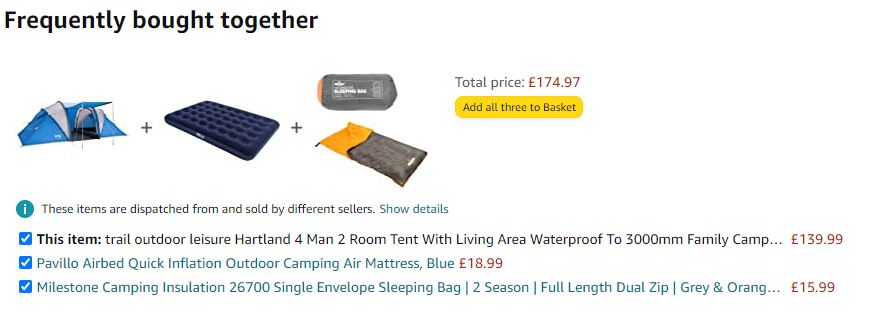
3. Anchor pricing
Price will always be a key factor in influencing our purchase behaviour. Anchor pricing is one of the common ways ecommerce websites use this. Websites often show you a discount or a special offer, which immediately sparks your interest and reduces barriers to purchase. In some cases, it can even encourage you to spend more than you normally would.
One example of anchor pricing is showing you a price that looks like the “original” price of the item, with the sales price listed directly next to it. This makes you automatically think you’re getting a good deal.
Another example of this pricing tactic is shops that use expensive products to boost the sales of lower-priced items. As shoppers, we love to compare prices and are always looking to find the best value. Placing a premium product next to a similar product at a standard price will instantly make that average-priced item look like a bargain in comparison. As they say, the best way to sell a £2,000 watch is to put it right next to a £10,000 watch.
4. Giving something for free
Giving customers something for free is another common ecommerce psychology trick. The idea behind this psychology relies on reciprocity. Reciprocity works as people don’t like to feel indebted to others, and if they do, they will try and make up for it. Therefore, online stores use this ecommerce psychology trick by offering an additional item or service for free.
One of the most persuasive things online retailers offer is free delivery. How many times have you actually added more to your basket just to get a free delivery? According to Retail Times, 90% of customers are encouraged to check out when there is no delivery cost – even if that means spending more on their purchase!
Therefore, many ecommerce websites have a certain spending level required for free delivery. For example, “free delivery on orders over £80.” Even if you wanted to buy something worth £60, you’ll probably end up spending the £80 to get free delivery.
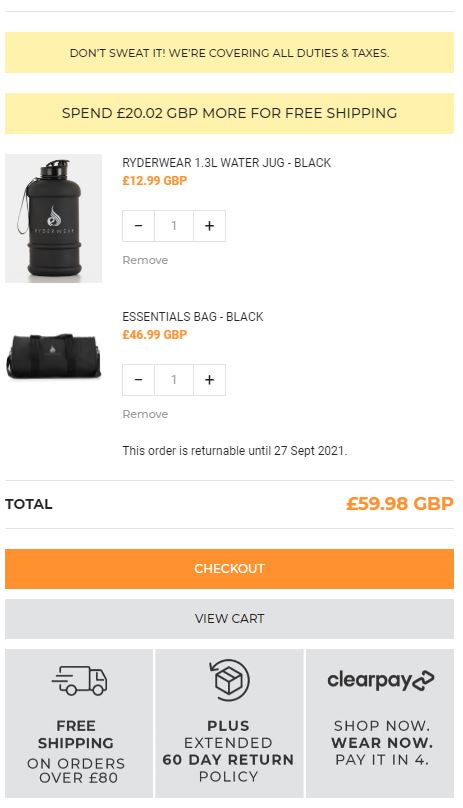
5. Creating urgency with scarcity
Scarcity is the phenomenon where, when a product or service is limited in availability (or perceived as being limited), it becomes more attractive.
You have likely noticed online marketplaces displaying limited-time offers, low stock levels and how many people are looking at the same item. These are all typical examples of how online stores create a false sense of urgency.
As consumers, we are more likely to commit to a purchase of an item that we think is going out of stock quickly. If you were unsure of making a purchase before, the fear of missing out (FOMO) on it can spur you into action. While scarcity is commonly used in ecommerce, it’s also one of the main factors that make buying art or NFTs attractive.
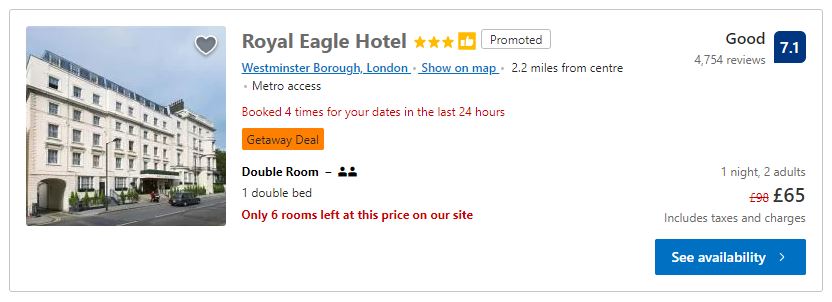
6. Visual tricks
Similar to retail stores and restaurants, ecommerce sites use various visual tricks to entice you to buy on their site. Here are a couple of examples of visual ecommerce psychology tricks they use:
- Using credit card logos: Due to the cashless effect, we tend to spend less money when there is physical money involved in a transaction. On the opposite, it’s proven that just seeing credit card logos can make us spend more – even when paying with cash! This is because the brain associates credit card logos with spending money. Therefore those Visa and Mastercard logos might subconsciously make you spend more than you should! This will likely also apply to logos of ‘Buy Now, Pay Later’ schemes (Klarna for example) that have massively increased in popularity in recent years.
- The psychological effect of colours: Studies show that men are more likely to buy products when the prices are displayed in red. Men seem to process ads more quickly and use colour as a visual heuristic, and red equals discount.
7. Express checkout
The quick checkout option is a commonly used trick by ecommerce sites. Online retailers will try to make you feel like a valued customer by offering you a faster checkout option to save you time. Rather than have to re-enter all your details, you can proceed swiftly to the purchase. However, beware that while express checkout will save you time, it also makes you more likely to buy and spend more.
8. Cart abandonment emails
This ecommerce psychology trick leverages attentional bias. We tend to focus on certain elements while ignoring others.
For example, after a week of trying a no-spend challenge, you go food shopping and find an elegant box of chocolate. Then, the attentional bias kicks in. Despite trying your best, you can’t resist and end up throwing it into your cart.
By reminding you about your abandoned carts, online stores make you think more about the products in the cart and less about your budget. Some ecommerce sites might even email you a discount code to try and persuade you to complete the purchase. (On the other hand, you could turn this into your advantage; if you know you’re going to buy something but don’t need it urgently, just abandon the item in your online basket for a couple of days and see if the store email you a discount code!).
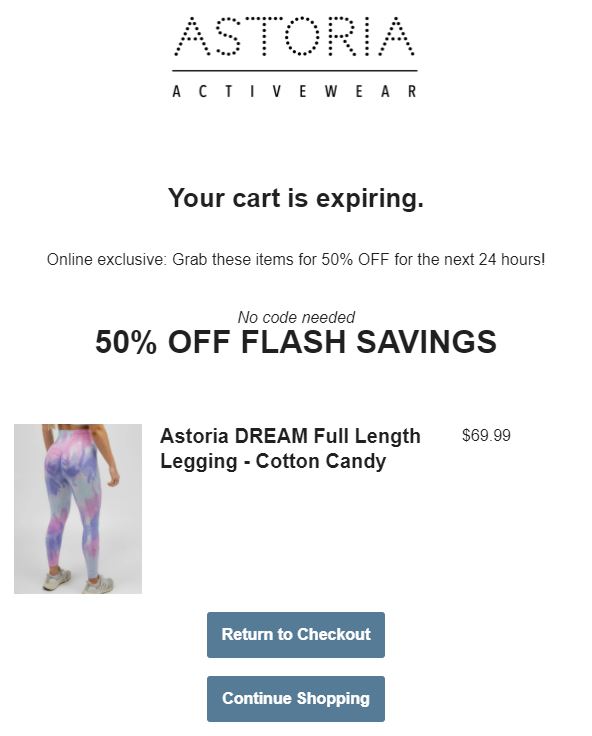
9. Sneaky pricing tricks
Whether it was a supermarket, a restaurant or an online store, sneaky pricing tactics are common ways to make you spend more. Here are a few ways online retailers trick us with pricing:
- Dropping the currency signs (£/$) on prices will push you to forget are actually spending real money
- Most retailers will use £9.99 instead of £10 to make the customer think it’s cheaper. But as customers get savvier and shop around, retailers are getting ahead by making it £9.97.
- Numbers take less time for the brain to process than words. Today’s consumers have low attention spans, so retailers try to help them make their minds up quickly. Half-price becomes 50%.
- Showing prices in instalments rather than a lump sum can make you spend more than planned. You tend to get anchored on a smaller price subconsciously, even if you know the total price.
10. Using aversion
There are certain things that buyers don’t like, and the subconscious will drive action to avoid them at all costs. Here are a couple of examples of these emotional biases:
- Loss aversion: Losses trigger negative, unpleasant emotions of pain, fear and regret. Nobody likes to miss out on an offer! Therefore, online stores use time-limited free shipping or discount coupons, pushing buyers to make a purchase as soon as possible.
- Risk aversion: Oftentimes, one of the most powerful factors in our decision not to buy something is risk aversion – the desire to avoid a potential loss. Not many buyers like to take risks, especially when it involves money. Online stores tackle this by offering you money-back guarantees, free returns or fast shipping.
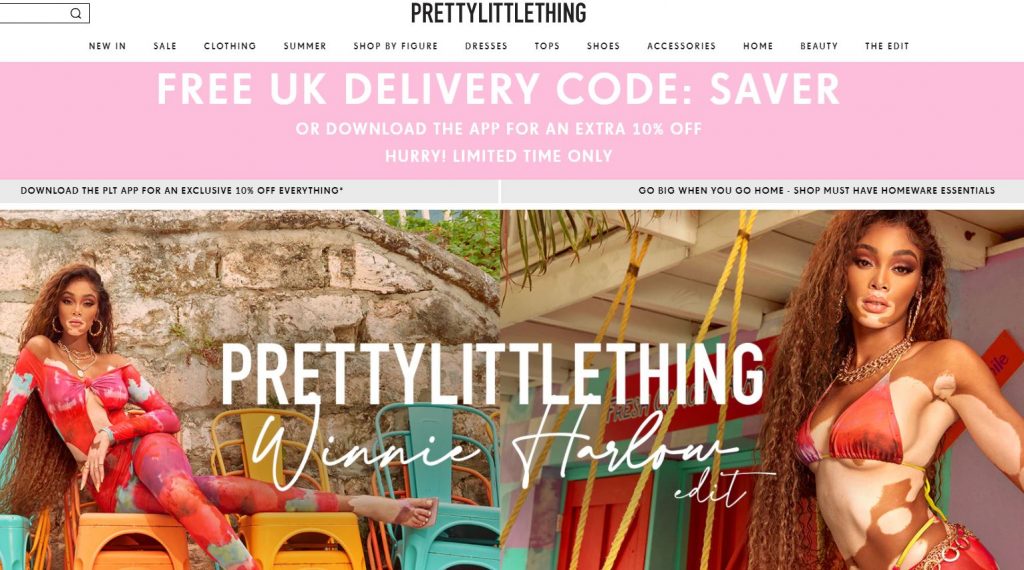
How to beat the ecommerce psychology tricks
Next time you’re doing online shopping, take a look around at the ecommerce websites. See if you can point to all the ways your experience has been crafted by ecommerce experts. The good news is that knowing the tricks they’re trying to play is half the battle. Then the other half is all about being prepared before you buy.
Here are a few great ways to beat the ecommerce psychology tricks to stop you from spending too much:
- Know what you want before you start shopping, and don’t get easily distracted. This will help you wise up to the psychological tricks.
- Make sure you do your own research. Check out reviews on independent sites, such as Trustpilot.
- Shop around to check you are paying the right price for the items that you are buying. Use price comparison sites such as PriceRunner (online shopping), Skyscanner (flights) and Trivago (hotels).
- Resist the temptation to purchase special add-ons that are suggested to you just before you finish your checkout.
- Think carefully before signing up to “one-click check out” or saving your card details on ecommerce sites. You might end up spending money far too easily.
- Check for hidden costs, such as shipping, booking fee or VAT, as these can increase the price of your purchase.
- Don’t spend much more than you planned just to take advantage of free shipping.
- Learn other useful tips to save money when online shopping to ensure you always get the best possible price.
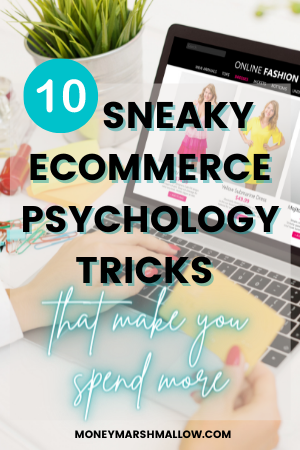
Money Marshmallow is reader-supported. When you buy through links on our site, we may earn an affiliate commission.
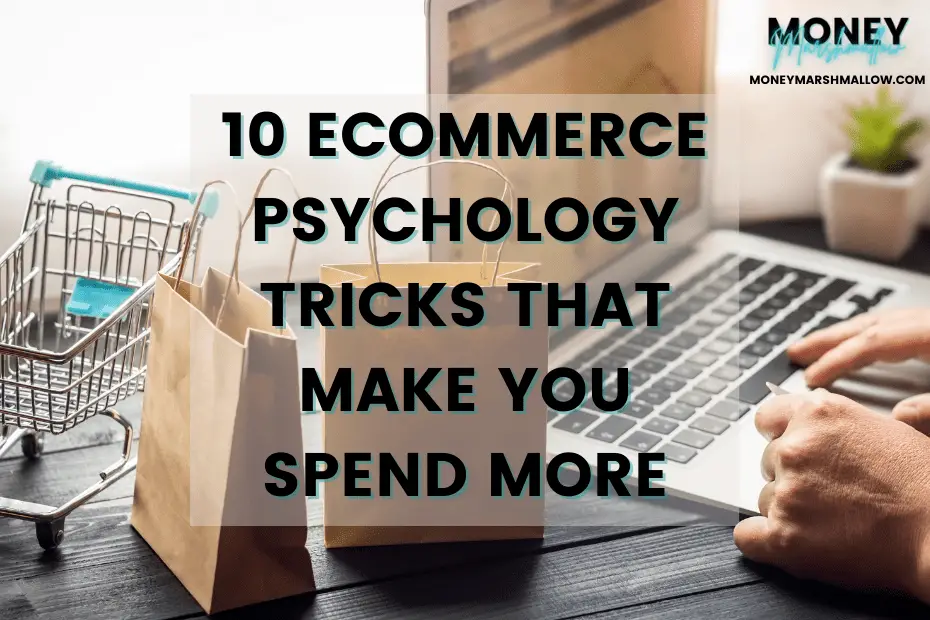
This was a super interesting post. I’ve gotten in the habit of reading reviews for products outside of Amazon because there seems to be lots of fake reviews. I never thought about them planting low ratings to make the reviews seem more legitimate. Thanks for the awesome tips!
Thanks! It’s difficult to tell nowadays which reviews are legit as some sites even allow reviews without a verification of purchase. This obviously means some reviews will be fake, which is not very helpful for a consumer.
This was so interesting and enlightening. Thanks for sharing.
Thank you, great to hear you found it useful and interesting!
Awesome article! I am aware when I go on travel sites that they are trying to play tricks to get you to buy ASAP. I love this topic, and will read others in this series that I see you wrote!
Thanks for your comment – I’m glad you enjoyed reading about these ecommerce psychology tricks! Hope you’ll find the other posts interesting too!